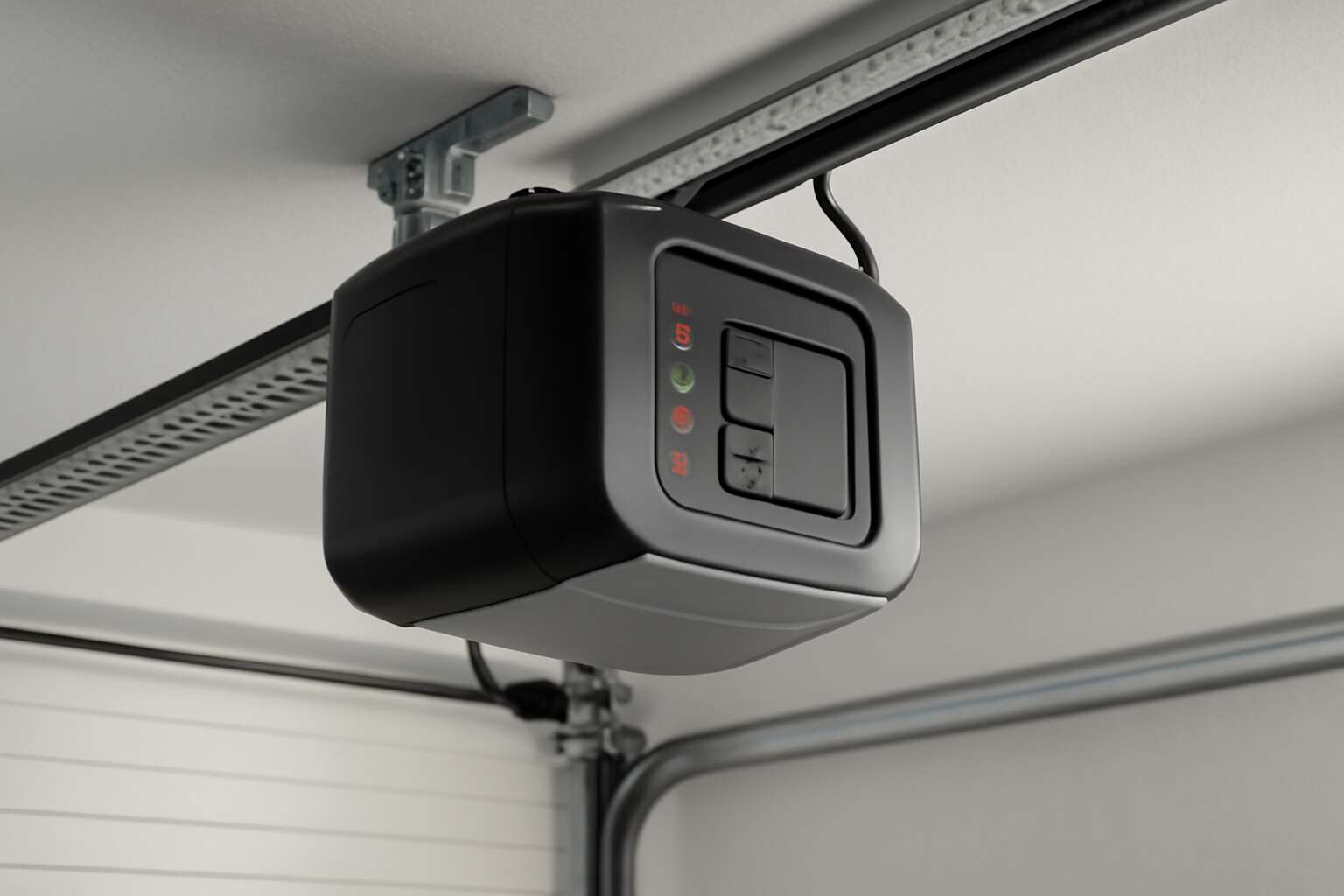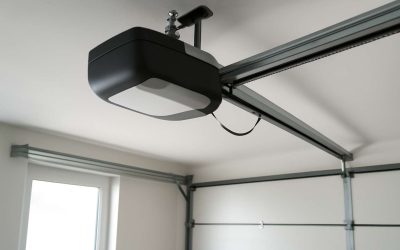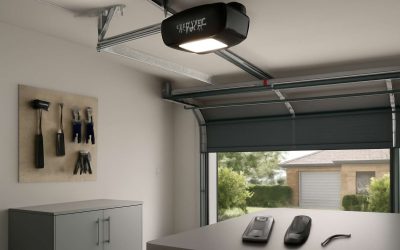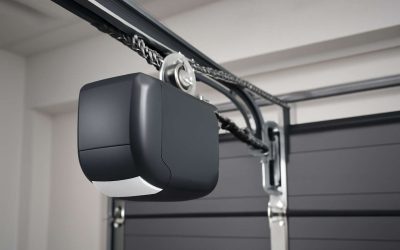Understanding Garage Door Motors
Overview of Garage Door Motor Types – Chain drive, belt drive, screw drive, hydraulic, and direct drive motors
In the symphony of modern garage convenience, the garage door motor stands as the silent maestro, orchestrating seamless openings and closings with effortless grace. An understanding of the various garage door motor types reveals a landscape rich with innovation and precision. Each mechanism, from chain drive to hydraulic, embodies a distinct character — fierce durability, whisper-quiet operation, or robust power. These specifications craft the backbone of reliable performance, guiding homeowners and professionals alike in their choice of the perfect fit.
Among the most common are chain drive and belt drive motors, where the former echoes with industrial strength, often demanding less maintenance but producing noticeable noise. Belt drive motors, on the other hand, whisper softly, ideal for quiet suburban settings. Screw drive motors, with their rugged efficiency, excel in environments demanding high torque, while hydraulic systems bring a level of smoothness suited for heavy-duty applications. For those seeking simplicity, the direct drive motor offers a sleek, minimalistic solution, embodying elegance in engineering.
Understanding these diverse garage door motor specifications is more than a technical exercise; it’s an invitation to appreciate the artistry behind modern automation. Whether you’re seeking durability, serenity, or power, each type sings its own unique song — waiting to be tuned perfectly to your needs.
Key Functions of Garage Door Motors – Automation, safety features, and remote operation
At the heart of every seamless garage entrance lies a marvel of modern engineering—the garage door motor. Its key functions extend beyond simple automation; it’s a guardian of safety and a conduit of convenience. A well-chosen motor not only automates the opening and closing but also integrates safety features that protect your family and your belongings. From obstacle detection to automatic stop mechanisms, these specifications ensure peace of mind with each operation.
Remote operation has revolutionised access, transforming a once manual task into a whisper-quiet experience. With the push of a button, your garage door responds instantly, thanks to sophisticated garage door motor specifications that enhance connectivity and ease of use. It’s this blend of technology and craftsmanship that elevates a mere door to a reliable partner in home automation.
In understanding the key functions of garage door motors, it’s essential to recognise the importance of features such as:
- Automatic safety reversal systems
- Battery backup options
- Smart home compatibility
Each of these elements contributes to a more secure and efficient garage environment, making the choice of a garage door motor a decision rooted in both innovation and necessity. The intricacies of garage door motor specifications weave a tapestry of precision that makes everyday life smoother and more secure.
Core Specifications to Consider
Motor Power and Horsepower – Impact on lifting capacity and performance
Underneath the surface of every reliable garage door motor lies a silent testament to its true strength—its power and horsepower. These core specifications are not mere numbers; they are the hidden force that determines how effortlessly your garage door rises, whether it’s a lightweight aluminium panel or a heavy-duty steel barrier. A motor with insufficient power may struggle against gravity, leading to jerky movements and premature wear, while an overpowered motor risks unnecessary energy consumption and noise pollution.
Choosing the right garage door motor specification involves understanding how motor power impacts lifting capacity and overall performance. For most residential applications, a motor with a horsepower rating between ½ and 1 HP strikes an ideal balance—robust enough to handle daily use yet efficient enough to minimise energy wastage. The heavier the garage door, the greater the horsepower needed to ensure smooth, reliable operation without stress.
In essence, the core specifications of a garage door motor—particularly motor power—are the silent guardians of longevity and performance. They shape the very essence of safety, efficiency, and durability, revealing what lies beneath the surface of a seemingly simple device. When it comes to choosing a garage door motor, understanding these specifications can transform a mundane purchase into a decision rooted in both logic and insight.
Torque Ratings – Significance for heavy or large garage doors
When it comes to selecting the perfect garage door motor, understanding torque ratings is paramount. Torque, the rotational force the motor delivers, directly influences its ability to move large or heavy garage doors with ease. If the torque is insufficient, the motor may strain, resulting in sluggish movements or even premature failure. Conversely, a motor with appropriate torque ensures smooth, reliable operation, especially for sizeable steel or wooden garage doors that demand more force to lift.
Heavy or oversized garage doors require a higher torque rating to function flawlessly. Typically, a torque range of around 30 to 50 Nm (Newton metres) is recommended for such applications, providing the necessary power without overburdening the motor. Manufacturers often specify these ratings clearly within the garage door motor specification, allowing homeowners and installers to make informed choices. In essence, the right torque rating isn’t just about strength—it’s about harmony between power and durability, ensuring longevity and safety.
- Assess the weight and size of your garage door
- Match these dimensions with the specified torque rating in the garage door motor specification
- Consider future needs if planning to upgrade or replace your garage door
Remember, selecting a motor with an appropriate torque rating is the cornerstone of reliable and safe garage door operation. It’s the unsung hero that guarantees your door moves seamlessly—an essential detail often overlooked in the pursuit of more obvious specifications like horsepower or speed.
Voltage and Current Requirements – Ensuring compatibility with existing electrical systems
When it comes to choosing the right garage door motor, understanding voltage and current requirements is nothing short of essential. After all, even the most powerful motor can be rendered useless if it doesn’t play nicely with your existing electrical system. Ignoring this could turn your smooth garage automation into a shocking experience—literally! Ensuring compatibility prevents unnecessary trips to the electrician and keeps everything running seamlessly.
Most garage door motors operate within standard voltage ranges, typically 110V or 220V, depending on your region. But don’t assume all motors are created equal—some may require a dedicated circuit or specific current capacity to perform optimally. To avoid a potential power mismatch, always scrutinise the garage door motor specification for exact voltage and current ratings. This small detail can make the difference between a quiet, reliable operation and a frustrating, flickering mess.
In essence, matching these electrical parameters ensures your garage door motor functions flawlessly without overloading your circuits. It’s the kind of detail that’s often overlooked but can save you a world of trouble—because a motor that’s out of sync with your electrical system isn’t just inconvenient; it’s downright unsafe!
Performance and Durability Features
Lifting Capacity – Maximum door weight and size support
When it comes to garage door motor specification, one of the most critical factors is lifting capacity. Think of it as the garage door motor’s strength test—how much weight can it truly handle without breaking a sweat? A robust motor should comfortably support the maximum door weight and size, ensuring smooth operation without those nerve-wracking halts mid-raising. After all, nobody wants their garage door to resemble a rebellious teenager—full of attitude but lacking the muscle.
Performance and durability features go hand in hand. A well-designed garage door motor specification includes high-quality components that withstand the rigours of daily use. For hefty, oversized doors, a motor with a high torque rating is essential. Here’s a quick rundown of what to look out for:
- Maximum door weight support
- Maximum door size capacity
- Durability under continuous operation
Choosing a motor that ticks these boxes guarantees that your garage door remains a reliable barrier rather than a daily source of frustration. When considering garage door motor specification, don’t forget—strength and resilience are the unsung heroes of smooth, long-lasting performance!
Speed of Operation – Opening and closing times
In the dance of daily routines, the speed at which your garage door opens and closes can be the difference between punctuality and chaos. A garage door motor specification that prioritises swift yet controlled operation ensures your mornings are seamless and stress-free. The ideal motor strikes a delicate balance—offering rapid response times without compromising safety or longevity. When selecting a garage door motor, consider the opening and closing times, typically measured in seconds, that align with your lifestyle’s rhythm.
Performance hinges not just on speed but also on resilience under constant use. Motors with precise speed regulation and consistent operation prevent sluggishness or abrupt halts, safeguarding both the mechanism and the user experience. For those with larger or heavier doors, a motor with heightened torque ratings can facilitate smoother, quicker movements, reducing strain on the system. Remember, a well-optimised garage door motor specification isn’t merely about speed; it’s about harmony—where power, precision, and endurance unite to elevate your daily convenience.
Noise Levels – Quiet operation features
Performance and durability are at the heart of a reliable garage door motor. A motor with consistent operation ensures smooth, trouble-free opening and closing, even after years of daily use. Noise levels also matter—quiet operation features can transform your garage into a peaceful space, especially if it’s close to living areas. Modern motors utilise advanced insulation and vibration dampening technology to minimise sound, making daily routines less disruptive.
For those seeking optimal performance, look for garage door motor specifications that highlight high-quality components and robust build. Features such as reinforced bearings and corrosion-resistant materials extend the lifespan of the system, reducing maintenance costs and downtime. In particular, a motor with a high torque rating guarantees efficient handling of heavier or larger doors without strain. This not only preserves the motor’s longevity but also ensures swift, dependable operation—no more sluggish responses or abrupt halts.
Achieving a harmonious blend of power, precision, and endurance is essential. When selecting a garage door motor, consider the noise levels, as quieter models contribute significantly to household comfort. Remember, a well-chosen motor specification directly influences the overall safety, functionality, and convenience of your garage system.
Safety and Security Specifications
Auto-Reverse and Safety Sensors – Preventing accidents and damage
In the shadowed corridors of modern automation, safety and security are not mere luxuries—they are the very sinew that sustains the delicate balance between convenience and catastrophe. When selecting a garage door motor specification, one must heed the silent whispers of caution embedded within its features.
Auto-reverse mechanisms and safety sensors serve as vigilant guardians, preventing accidents and the unwelcome dance of damage. These features act as an invisible barrier, halting the door’s descent at the faintest hint of obstruction. Imagine the quiet tension of a sensor detecting a stray pet or a child’s toy—before disaster strikes.
To ensure this delicate safeguard functions flawlessly, look for garage door motors equipped with integrated safety sensors and auto-reverse capabilities. They are the unseen sentinels, safeguarding lives and possessions alike. In this darkened realm of mechanics, such specifications transform from mere technicalities into vital shields against the chaos of unforeseen mishaps.
Manual Release Mechanisms – Emergency operation during power failures
Power failures can turn a smooth automated process into a sudden challenge. That’s why, when assessing the garage door motor specification, it’s vital to consider emergency release mechanisms. These manual overrides provide a crucial lifeline during unexpected power outages, ensuring your garage door remains accessible when you need it most. A reliable garage door motor will incorporate a straightforward, easy-to-operate manual release, often a pull cord or handle, allowing you to operate the door without electricity.
In addition, look for motors featuring integrated manual operation options that adhere to safety standards. Some models include a lockable release handle to prevent accidental disengagement, which is especially important in shared or multi-residence setups. The presence of a well-designed emergency release mechanism seamlessly balances automation with safety, making sure that homeowners are never left stranded. After all, a garage door motor specification that prioritises emergency operation can mean the difference between inconvenience and security in critical moments.
Security Protocols – Rolling codes, encrypted communication
Security is more than just a lock on your garage door. Modern garage door motor specification often includes advanced security protocols like rolling codes and encrypted communication. These features create a nearly impenetrable barrier against unauthorised access. When choosing a garage door motor, it’s essential to verify these specifications to safeguard your property effectively.
Rolling codes change with every use, making it difficult for intruders to clone signals. Encrypted communication ensures that control commands remain private, reducing the risk of hacking. Some models also incorporate secure access via smartphone apps, adding another layer of protection. These innovations are vital components in a comprehensive security protocol that keeps your garage safe.
Look for motors with built-in security features, such as
- rolling code technology
- encrypted wireless communication
- motion sensors
that alert you to suspicious activity. Combining these elements with reliable manual release mechanisms creates a robust security system, ensuring your garage remains both accessible and protected in every circumstance. After all, a well-designed garage door motor specification prioritising security can prevent unauthorised entry and provide peace of mind.
Compatibility and Integration
Door Types Compatibility – Sectional, tilt-up, slide, or custom doors
Choosing the right garage door motor specification is crucial for seamless operation and compatibility. Different door types demand tailored motor features to ensure smooth functionality. For sectional and tilt-up doors, the motor must provide sufficient lifting capacity and torque ratings to handle the weight and size of the door. Slide doors, on the other hand, benefit from motors with precise speed control and quiet operation features, especially in residential settings. Custom doors often require specialised garage door motor specifications to match unique dimensions and weight.
Compatibility extends beyond mere size. It’s vital that the motor integrates with existing garage door systems and electrical setups. For example, some motors are designed specifically for sectional doors with compatibility in mind, while others support custom or tilt-up doors. When selecting a garage door motor, consider the specific door type and ensure the motor’s lifting capacity and safety features align with your needs. This prevents future issues and guarantees reliable, long-term operation.
Smart Home Integration – Wi-Fi, Bluetooth, app controls
In today’s connected world, smart home integration has become a pivotal aspect of garage door motor specification. Modern motors often feature Wi-Fi, Bluetooth, and app controls that allow homeowners to operate their doors remotely, enhancing convenience and security. These intelligent systems can be managed from anywhere, providing real-time updates and notifications, which is especially valuable in busy households or commercial settings.
Seamless integration with existing electrical systems is equally crucial. Compatibility ensures that the garage door motor functions smoothly without requiring extensive rewiring or upgrades. It’s worth noting that some motors are designed with compatibility in mind for specific door types, such as sectional or tilt-up models, making installation straightforward and reliable.
When choosing a garage door motor, consider features like encrypted communication and rolling code security protocols. These enhancements bolster safety, preventing unauthorised access. By prioritising these specifications, you not only optimise your garage’s functionality but also fortify its security architecture.
Remote Controls and Keypads – Number of devices supported
Modern garage door motor specification often includes remote controls and keypads supporting multiple devices. This feature is vital for households or commercial sites where several users need access. A typical setup can support up to 8 or more remote controls, ensuring multiple family members or staff can operate the garage door without hassle.
Compatibility with existing electrical systems is equally important. A compatible garage door motor specification guarantees seamless integration, preventing unnecessary rewiring or upgrades. Many motors are designed specifically for different door types—sectional, tilt-up, or custom models—making installation straightforward and reliable.
In the realm of remote access, here’s a quick overview:
- Number of devices supported
- Range of remote controls
- Compatibility with different keypad models
Choosing a garage door motor with robust security protocols—like rolling code encryption—is crucial. It prevents unauthorised access and enhances overall safety. When selecting a motor, consider these specifications carefully to optimise both functionality and security, ensuring your garage remains safe and accessible at all times.
Installation and Maintenance
Installation Requirements – Power supply, space, and mounting considerations
When embarking on the journey to select a garage door motor, understanding the installation requirements is crucial — it’s the silent architect of smooth operation and lasting durability. The power supply must be stable and capable, typically requiring a dedicated electrical circuit that can handle the motor’s voltage and current demands. An inconsistent power source can turn a seamless automation into a frustrating ordeal. Space considerations are equally vital; ample clearance ensures unobstructed movement and safe operation, especially for larger or sectional garage doors.
Mounting considerations demand precision and planning. The motor must be securely affixed to a sturdy ceiling or wall, with proper reinforcement to bear the load. For optimal functionality, some garages benefit from a detailed checklist, including proper alignment and the installation of safety sensors. The garage door motor specification should encompass these elements, ensuring that each component harmonises perfectly with the physical environment, thus preventing future malfunction and enhancing safety.
Maintenance Needs – Lubrication, inspections, and troubleshooting
In the shadowed corners of garage architecture, the silent heartbeat resides within the garage door motor. Its lifecycle hinges on diligent maintenance, a ritual of lubrication, inspection, and troubleshooting that preserves its whisper-quiet operation. Regularly applying high-quality lubricant to hinges, rollers, and tracks diminishes friction’s grip, ensuring the motor’s longevity. Inspections reveal the subtle signs of wear—stripped gears or frayed wires—that can threaten the delicate harmony of automated door systems.
Understanding the nuances of garage door motor specification is vital; it dictates not only the motor’s capacity but also its resilience against the relentless passage of time. An unassuming component, yet its maintenance is a testament to the meticulous care required to prevent catastrophic failure. For those seeking assurance, a detailed checklist can serve as a safeguard against unforeseen malfunctions, bolstering safety and operational stability in the darkness of uncertainty.
Warranty and Support – Coverage, service options, and manufacturer reputation
When investing in a garage door motor, understanding its installation and maintenance warranty is crucial. A comprehensive warranty not only offers peace of mind but reflects the manufacturer’s confidence in the product’s durability. Coverage often includes repair or replacement of faulty components, ensuring your investment stands the test of time.
Service options vary, ranging from standard repairs to full system upgrades. An established manufacturer’s reputation can be a reliable indicator of support quality—look for brands known for prompt service and genuine parts. The best warranty plans tend to encompass ongoing support, giving you confidence that any unforeseen issues will be swiftly addressed.
In terms of installation and after-sales support, some providers offer dedicated technician visits or remote diagnostics, which can be invaluable in maintaining optimal garage door motor specification performance. A high-quality support system ensures your automated system remains safe, efficient, and quietly reliable—an essential aspect of modern garage automation.
Energy Efficiency and Cost Considerations
Power Consumption – Efficiency ratings and operational costs
In the realm of garage door motor specification, energy efficiency is no mere afterthought but a vital consideration that echoes through the corridors of cost savings and ecological responsibility. A motor that consumes less power while delivering robust performance acts as a silent guardian of your wallet and the planet, quietly reducing operational expenses over time. The efficiency ratings, often expressed through metrics like the Energy Star label or comparable standards, shine a light on the true energy footprint of your garage door system.
Understanding power consumption is essential—an efficient garage door motor specification balances the delicate dance between power output and minimal energy drain. For homeowners seeking to harmonise performance with sustainability, examining the operational costs becomes a vital step. The difference between a high-efficiency model and its less frugal counterpart can amount to significant savings, especially when factoring in long-term usage. As we explore these factors, it’s clear that an investment in energy-savvy technology is an investment in a smarter, more sustainable future.
Moreover, some garage door motors boast features like variable speed operation and intelligent circuitry, which optimise power usage during each cycle. For those with large or heavy doors, selecting a motor with appropriate torque ratings ensures smooth operation without unnecessary energy expenditure. When considering your garage door motor specification, remember that a well-chosen motor not only elevates functionality but also preserves energy, proving that efficiency is truly a cornerstone of modern garage technology.
Cost of Motor Units – Budget ranges and value for performance
When it comes to choosing the right garage door motor, budget considerations often feel like the dark art of home improvement. The cost of motor units varies widely, from budget-friendly options to premium models packed with features. But remember, a higher price tag doesn’t always guarantee better performance—sometimes you’re just paying extra for flashy gadgets or a glossy finish. In fact, the key is finding a balance between cost and value for performance, ensuring your investment delivers long-term reliability without draining your wallet.
Typically, garage door motor specifications include a broad price spectrum, with entry-level models suitable for lightweight doors and more expensive units designed for larger, heavy-duty applications. For those seeking a smart blend of affordability and durability, mid-range motors often strike the best deal, offering essential features like smooth operation and decent energy efficiency. As you sift through options, keep an eye out for motors that boast high torque ratings and low energy consumption—these are often the unsung heroes that save money over time.
In the grand theatre of garage door motor specification, understanding the cost versus performance ratio can be the difference between a smooth, silent operation and a persistent headache. Whether you’re upgrading or installing for the first time, remember: a well-chosen motor isn’t just about opening and closing doors—it’s about long-term peace of mind, energy savings, and a touch of modern convenience. Now, let’s talk about how some models deliver exceptional value without the price tag drama.
Long-term Savings – Durability and energy-efficient features
In the symphony of home automation, the garage door motor specification often remains an unsung hero—quietly working behind the scenes to deliver convenience and security. Yet, investing in an energy-efficient motor isn’t merely an eco-conscious choice; it’s a strategic move towards long-term savings. High-quality motors with superior durability tend to feature advanced energy-efficient technologies, reducing operational costs over their lifespan. This means lower electricity bills and less wear and tear, translating into fewer maintenance worries and extended product life.
When evaluating garage door motor specification, look for models that combine high torque ratings with low energy consumption. These motors are often equipped with intelligent features like variable speed control and soft-start technology, which minimise power surges and extend component longevity. Such enhancements not only support a smoother operation but also contribute to a more silent, energy-conscious function—both vital qualities in a modern household.
Furthermore, considering the cost of motor units in relation to their energy efficiency can be revealing. For instance, an initial investment in a slightly more expensive, energy-efficient model may be offset by reduced electricity bills and fewer repairs down the line. It’s a delicate dance between the upfront price and ongoing savings, where the right garage door motor specification can truly pay dividends over time.




0 Comments